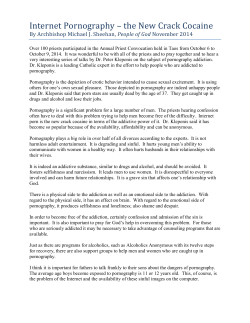
May 9, 2015 - Congregation Beth-EL
Welcome to Congregation Beth-El Shabbat Shalom שבת שלום Friday Evening (May 8, 2015): Services: 6:00 p.m. Candle lighting: by 7:51 p.m. _______________________________ Saturday, May 9,2015 / 20 Iyar, 5775 Parshat Emor Morning Services: 9:30 a.m. (Mazel Tov to Eva Levin on her Bat Mitvah) Torah : Page: 517 Maftir : Page: 522 Haftorah: Page: 530 Mincha service: 8:20 p.m. ANNUAL CBE RAFFLE Shabbat ends: 9:02 p.m. $14,600 _______________________________ In cash prizes for 5 lucky winners $10,000 first prize $1,800 2nd + 3rd prizes $500 4th + 5th prizes Next week Shabbat Candle lighting: Friday, May 15, 2015 by 8:00 p.m. DRAW ON SUNDAY, JUNE 7, 2015 Tickets $100 each, only 450 Tickets available Cantor David Guber Reverend Gershon Katz Rabbi Ronnie Cahana Rabbi Emeritus Allan Langner Cantor Hyman Gisser, z”l Congregation Beth-El 1000 Lucerne Road, TMR, Quebec H3R 2H9 Telephone: 514-738-4766 www.beth-el.ca events@beth-el.ca SUMMARY Parshat Emor, Leviticus 21:1 - 24:23 • • • • CONDOLENCES To Richard and Lily Gelber, on the passing of his sister, Leslee Gelber. MAZEL TOV To Francine Wein and Leonard Levin, on the Bat Mitzvah of their daughter, Eva Rebecca Levin. To Kaila Wein, on the Bat Mitzvah of her granddaughter, Eva Rebecca Levin CONGREGATIONAL KIDDUSH Sponsored by Leonard Levin and Francine Wein on the occasion of the Bat Mitzvah or their daughter, Eva Rebecca Levin. Parshat Emor begins by outlining laws directed to the Kohanim (priests) and the Kohen Gadol (high priest) including the order that the Kohen refrain from becoming ritually impure through contact with a dead body, and listing the increased restrictions on whom the Kohanim may marry. A Kohen with any one of a long list of physical blemishes was forbidden to perform the holy service until he was cured and the blemishes were healed. The Parsha then announces laws to be followed by the People of Israel which require that anyone ritually impure (tamei) to refrain from going to holy places. It further discusses the laws of terumah (the small percentage of food separated from the harvest given to a Kohen before the balance can be eaten) and various blemishes rendering an offering unfit. The people are warned yet again not to desecrate G-d's name but to praise Him. Finally, the festivals of the year are noted followed by the command to light the menorah and to keep the ner tamid, the perpetual light, constantly burning. (AK) HAFTARAH SUMMARY, Ezekiel 44:15-31 EVENTS: • Thursday, May 21, 2015 Beth-El Sisterhood Torah Luncheon - honouring Maxine Bercovici Please call the office for more details • Sunday, May 31, 2015 : Even More Cantorial Magic: Cantors David + Shlomo Guber perform yet again ! You can now call the office to purchase tickets. We are also selling advertising space in the Program book. • Sunday, June 7, 2015 : Annual Beth-El RAFFLE Please ensure you have your tickets for our Annual fundraiser. Dinner will be served. The prophet Ezekiel describes the rules for the priests that will serve in the Third Temple which will be built at an unspecified, apocalyptic future date. He stipulates that the priests must wear specific garments, and are commanded to keep their hair neatly cut. They are strictly forbidden drinking wine while they are performing their priestly duties, and they are prohibited from marrying women who are divorced or widowed (unless the widow was originally married to a priest). Ezekiel then tells of the priests’ role being completed through teaching the Israelites about which is sacred and that which is profane, what is pure and what is impure. The priests will act as judges for the people and rule according to the laws and directives of the Torah. They will be forbidden to approach a corpse unless it is the body of a person in their immediate families. Finally, G-d stipulates through Ezekiel that the priests will not be given property in the land of Israel as G-d will be their portion. They will however they partake in their share of the sacrifices, and benefit from a portion of the tithes. The Haftarah is linked to Parshat Emor wherein Moses explains the rules of the priesthood dictated to him by G-d. In the haftarah, Ezekiel functions as a messenger between G-d and the people, and also giving the laws for the priests. Essentially, the parallel narratives emphasize the continuity from the time of the Torah to the later prophets. (AK)
© Copyright 2025












